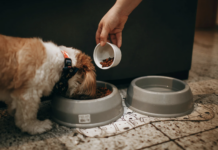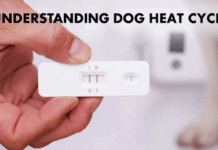Last Updated on December 8, 2021 by Dogs Vets
How to keep your four-legged friends hydrated
As a pet owner, you probably already know how important a balanced diet is for your pet’s health. Drinking water is also an essential part of the healthy diet of your friend.
Maybe you never thought about its reasons since we just know that we just need to drink water every day regularly as living beings.
But hydration is crucial for your pet to be happy and healthy. Without it, the pet’s organism is not going to function correctly.
Let’s talk more about why your pet needs water and how they can make sure they always stay hydrated.
Why is water so important for cats and dogs?
An adequate, clean, and constant water supply is crucial for a healthy pet for many reasons. Here are the most important ones:
- Helps with maintaining body temperature — Animals need water to regulate their body temperature. Since they are not sweating as humans do, they pant with their tongues to speed up water evaporation and cool their bodies faster. Like this, they are losing more of their hydration level than we humans do through sweating, thus they need to replenish those levels by drinking water.
- Helps to release waste and toxins — Similar to humans, the primary component of animals’ blood is water. Blood carries the nutrition and oxygen in your pet’s body, where water plays a crucial role in guaranteeing each organ receives the proper nutrition. Once this is done, water helps take away the toxins from the cells.
- Helps with digestion — Water helps pets break down their pet’s food and absorb the nutrients better. Another thing is that it helps with the secretion of enzymes and the acid necessary to complete the digestive process fully.
In general, a significant portion of the water that your dog or cat might need is coming from their food if you are giving them wet food. However, if they prefer dry food, guaranteeing them access to water is even more crucial.
Signs of Dehydration
The amount a pet needs to consume per day depends on their age, size, activity level, and environmental factors like temperature and humidity. So, it is hard to say how much water precisely an animal should drink per day.
In general, dogs need at least 40 ml per kilogram of their weight, and cats about 60 ml.
Want to check if your pet is dehydrated? You can lift the free fold of skin in the area of the shoulders and see if it descends. If the water level of your pet is normal, the skin should very quickly return to its original state.
If YOUR pet is not hydrated enough, it’S SKIN stays gathered when you release it.
You can notice if your dog is dehydrated by dry gums, nose, or eyes, loss of appetite, elevated heart rate, or energy loss.
Again, we need to mention that each animal might show different signs, so if you notice anything unusual in your pet’s behavior, take them to the vet as soon as possible.
How to keep your pets hydrated?
It could happen that you forget to give your pet water. If this happens occasionally and for no more than a day, no harm will come to your four-legged friend.
If you have a dog, you need to make sure you bring water for your pet during your walks, especially on hot days in the summer.
A perfect way to do so is by getting a dog water bottle. We can facilitate you by providing you with 12 wonderful choices.
When it comes to drinking water at home, dogs are not as exigent as cats, and they will like almost every water bowl you give them. Still, a couple of things to keep in mind:
- Get a bowl that corresponds to the size of your dog;
- Put the bowl in an easily accessible place;
- Keep the water fresh and cool (in summer days, you can put a couple of ice cubes in it)
Cats are another story. We all know that they are not fans of water in general, but they still need access to a water supply. Cats love running water, and therefore a water fountain is a perfect solution for you. Find the best cat water fountain and make your friend happy while assuring you keep them healthy and hydrated.
Do you want to make drinking water more interesting for your pet? You can add a tablespoon of bone broth, lactose-free milk, or water drops with a taste that your pet loves. Of course, make sure that whatever you are adding to your pet’s bowl or fountain is suitable for animals. Making the water more exciting can make your lovely four-legged friend happier and ensure they are healthy as well.
Wrapping Up
Keeping your pet happy and healthy is not an easy task, but we know that they are an essential part of your life, and you will give them the best. You will guarantee them a tasty meal by choosing the best food, but make sure you get them a quality water bowl or water fountain to help them stay hydrated.
Fact Check
We hope you enjoyed this article… What are your thoughts on How to keep your four-legged friends hydrated?
Рleаse let us knоw yоur thоughts in the соmments seсtiоn. Feel free to share with us in the comments section below.

















